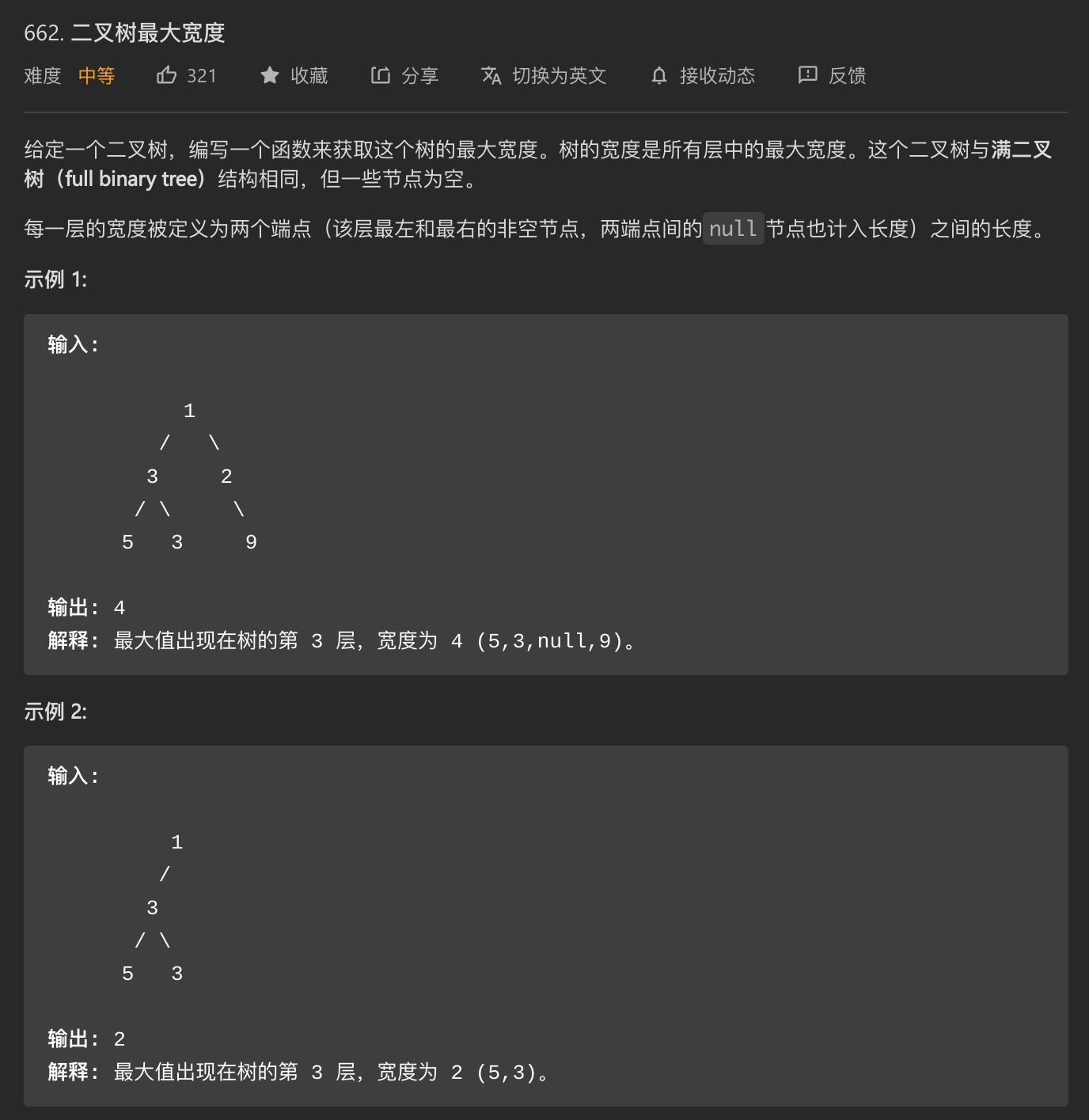思路:DFS + 标号
- BFS非常容易,层次遍历不难
- DFS需要两个标记,一个记录当前深度
depth,一个记录当前的节点的标号index 节点标号:一层一层,从左往右写,节点不存在也占用标号,也就是
`node.left.val = 2 * val + 1`和`node.right.val = 2 * val + 2`(第一个根节点从0开始)
相同层的将标号放到一起,然后算最后一个节点的标号减去当前层第一个节点的标号。
- 关键还是在于节点标号的思想。
代码:
# Definition for a binary tree node.
# class TreeNode:
# def __init__(self, val=0, left=None, right=None):
# self.val = val
# self.left = left
# self.right = right
class Solution:
def widthOfBinaryTree(self, root: Optional[TreeNode]) -> int:
# 宽搜比较容易
# 深搜也可以做
recPos = collections.defaultdict(list)
self.maxWidth = 0
def dfs(root: Optional[TreeNode], index: int, depth: int) -> None:
if not root:
return
recPos[depth].append(index)
dfs(root.left, 2 * index + 1, depth + 1)
dfs(root.right, 2 * index + 2, depth + 1)
self.maxWidth = max(self.maxWidth, recPos[depth][-1] - recPos[depth][0] + 1)
dfs(root, 0, 0)
return self.maxWidth


